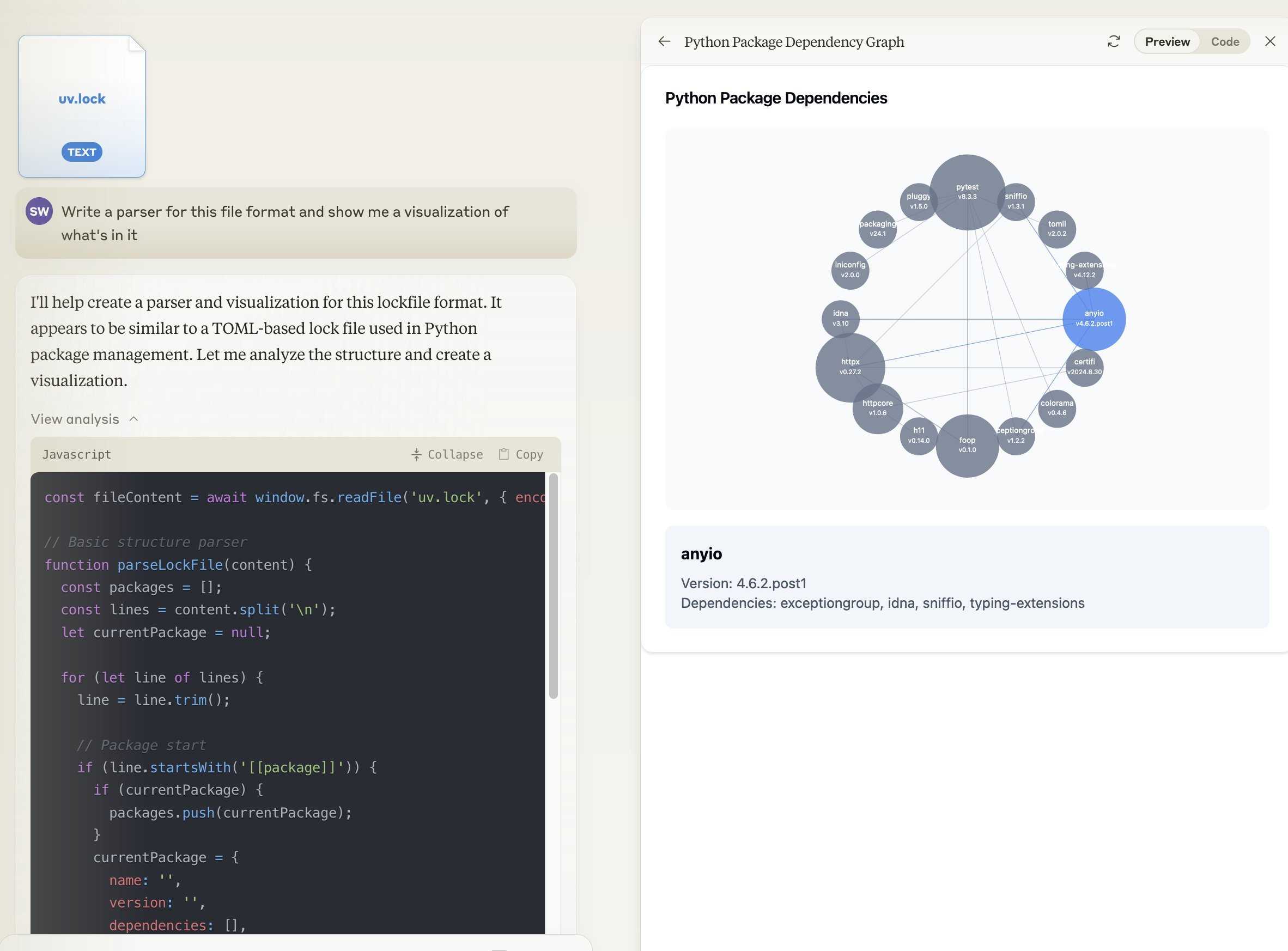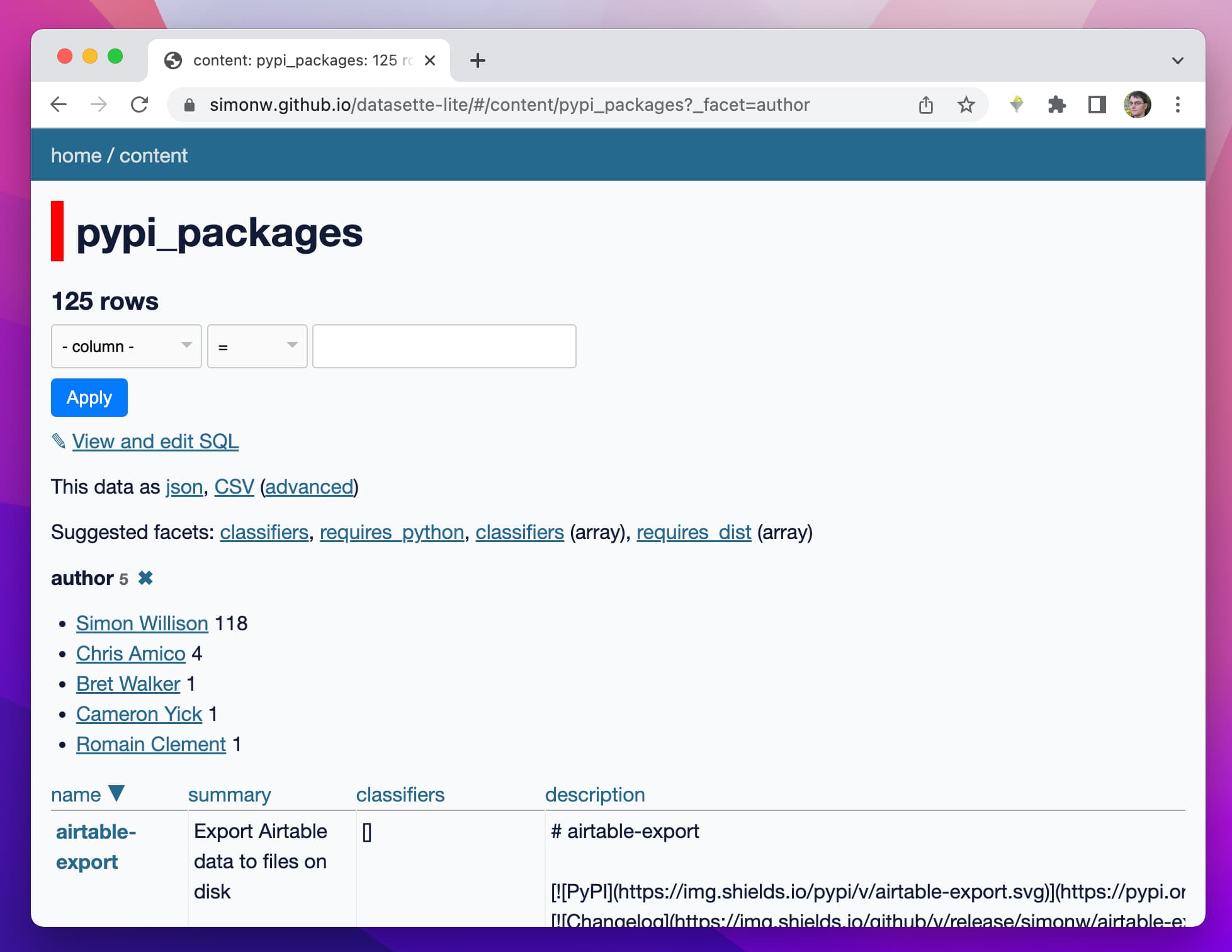10 posts tagged “webworkers”
2024
Notes on the new Claude analysis JavaScript code execution tool
Anthropic released a new feature for their Claude.ai consumer-facing chat bot interface today which they’re calling “the analysis tool”.
[... 918 words]2023
Instant colour fill with HTML Canvas
(via)
Shane O'Sullivan describes how to implement instant colour fill using HTML Canvas and some really clever tricks with Web Workers. A new technique to me is passing a canvas.getImageData() object to a Web Worker via worker.postMessage({action: "process", buffer: imageData.data.buffer}, [imageData.data.buffer]) where that second argument is a list of objects to "transfer ownership of" - then the worker can create a new ImageData(), populate it and transfer ownership of that back to the parent window.
Building a Signal Analyzer with Modern Web Tech (via) Casey Primozic’s detailed write-up of his project to build a spectrogram and oscilloscope using cutting-edge modern web technology: Web Workers, Web Audio, SharedArrayBuffer, Atomics.waitAsync, OffscreenCanvas, WebAssembly SIMD and more. His conclusion: “Web developers now have all the tools they need to build native-or-better quality apps on the web.”
2022
Datasette Lite: a server-side Python web application running in a browser
Datasette Lite is a new way to run Datasette: entirely in a browser, taking advantage of the incredible Pyodide project which provides Python compiled to WebAssembly plus a whole suite of useful extras.
[... 4,800 words]2021
Introducing Partytown 🎉: Run Third-Party Scripts From a Web Worker (via) This is just spectacularly clever. Partytown is a 6KB JavaScript library that helps you move gnarly poorly performing third-party scripts out of your main page and into a web worker, so they won’t destroy your page performance. The really clever bit is in how it provides sandboxed access to the page DOM: it uses a devious trick where a proxy object provides getters and setters which then make blocking API calls to a separate service worker, using the mostly-forgotten xhr.open(..., false) parameter that turns off the async default for an XMLHttpRequest call.
2020
AVIF has landed. AVIF support landed in Chrome 85 a few weeks ago. It’s a new lossy royalty-free image format derived from AV1 video and it’s really impressive—it can achieve similar results to JPEG using a quarter of the file size! Jake digs into AVIF in detail, providing lots of illustrative examples created using the Squoosh online compressor, which now supports AVIF encoding. Jake used the same WebAssembly encoder from Squoosh to decode AVIF images in a web worker so that the demos in his article would work even for browsers that don’t yet support AVIF natively.
2019
When should you be using Web Workers? 85% of worldwide mobile devices are massively less performant than high end iPhones. Surma argues that we should be making aggressive use of Web Workers to keep as much of our JavaScript as possible off the main UI thread, to avoid freezing up the entire interface.
WebAssembly at eBay: A Real-World Use Case (via) eBay used WebAssembly to run a C++ barcode reading library inside a web worker, passing images from the camera in order to provide a barcode scanning interface as part of their mobile web “add listing” page (a feature that had already proved successful in their native mobile apps). This is a great write-up, with lots of detail about how they compiled the library. They ended up running three barcode solutions in parallel web workers—two using WebAssembly, one in pure JavaScript—because their testing showed that racing between three implementations greatly increased the chance of a match due to how the different libraries handled poor quality or out-of-focus images.
2010
An implausibly illustrated introduction to HTML5 Web Workers. By Mark Pilgrim.
2009
Firefox 3.5 for developers. It’s out today, and the feature list is huge. Highlights include HTML 5 drag ’n’ drop, audio and video elements, offline resources, downloadable fonts, text-shadow, CSS transforms with -moz-transform, localStorage, geolocation, web workers, trackpad swipe events, native JSON, cross-site HTTP requests, text API for canvas, defer attribute for the script element and TraceMonkey for better JS performance!

